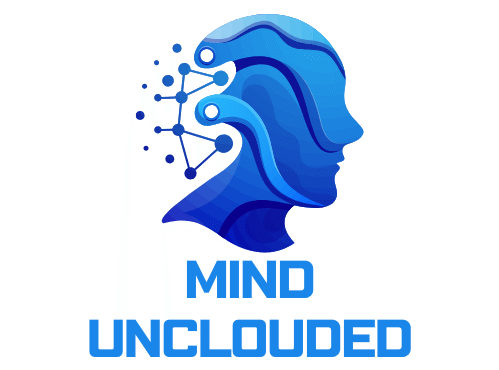Introduction
Ketamine therapy has emerged as a fast-acting option for treatment-resistant anxiety, often bringing relief within hours rather than weeks. Many people wonder how fast ketamine works for anxiety, since traditional medications like SSRIs can take up to a month to show effects. With IV ketamine infusions, patients may feel calmer in as little as 40 minutes, while intranasal Spravato® therapy typically eases anxiety within 2–4 hours. This rapid onset makes ketamine infusion speed and delivery routes—IV, nasal spray, intramuscular, and sublingual—key factors when comparing ketamine vs. SSRIs for rapid anxiety relief. Understanding how fast does ketamine work for anxiety is essential for those seeking immediate treatment options.
This information is based on clinical observations and studies conducted by medical professionals specializing in psychiatric treatments.
Understanding Treatment-Resistant Anxiety
Treatment-resistant anxiety describes persistent anxiety symptoms despite adequate trials of at least one antidepressant or anxiolytic at proper doses and durations. Up to 30–60% of patients with anxiety disorders experience insufficient relief from first-line therapies, leaving many still symptomatic after weeks or months of treatment. This form of refractory anxiety often carries a higher risk of relapse and chronic impairment, prompting clinicians to explore faster-acting options.

As patients ask, “How fast does ketamine work for anxiety?” recognizing this resistance is crucial for timely referral to alternative protocols like ketamine infusion or esketamine spray. For patients struggling with traditional treatments, understanding the answer to how fast does ketamine work for anxiety can lead to quicker relief.
Our insights are drawn from extensive clinical experience in managing complex anxiety cases and staying updated with the latest psychiatric research.
Neurobiological Mechanism of Ketamine
Ketamine works by briefly blocking NMDA receptors in the brain, which triggers a sudden surge of the neurotransmitter glutamate. This glutamate boost rapidly activates AMPA receptors, leading to a cascade of signals that strengthen and form new connections between neurons. In practical terms, these changes help “reset” overactive circuits linked to anxiety, producing relief within minutes to hours. Unlike SSRIs, which build up slowly, ketamine’s quick action supports fast synapse growth and increases levels of brain-derived neurotrophic factor (BDNF). This combination of rapid receptor modulation and enhanced neural plasticity underlies why many patients report feeling noticeably calmer shortly after IV infusions or nasal spray doses.
These mechanisms are well-documented in peer-reviewed journals and are part of the standard curriculum in neuropharmacology.
Administration Routes & Onset Times
Ketamine’s speed depends on how it’s given. With an IV infusion, many people feel calmer in just 40 minutes, and peak relief occurs around 24 hours after a standard 0.5 mg/kg dose. Intranasal Spravato® therapy delivers rapid relief, too, often easing anxiety within 2–4 hours under clinical supervision. Intramuscular ketamine injections act even faster, with noticeable effects in 5–15 minutes and a peak around 30 minutes. Sublingual lozenges or troches take a bit longer—typically 15–30 minutes for initial relief, with steady symptom reduction over the following hours. Choosing between IV, nasal spray, IM, or sublingual routes involves balancing onset speed, convenience, and treatment setting to find the best match for each patient.
These administration methods are based on protocols developed by licensed medical professionals and are implemented in certified healthcare facilities.
Comparative Efficacy vs. Traditional Treatments
Ketamine’s rapid action stands out when compared to standard anxiety treatments. Traditional SSRIs and SNRIs often require four to six weeks before noticeable symptom relief, and benzodiazepines, while faster, carry risks of dependence and sedation. By contrast, ketamine infusion speed can yield calm within 40 minutes, while intranasal and intramuscular forms work within hours or even minutes. This swift onset can be life-changing for those in crisis or with severe, treatment-resistant anxiety. Moreover, ketamine’s unique effect on neural plasticity offers benefits beyond temporary symptom relief, supporting longer-lasting improvement when combined with therapy. While traditional medications excel at daily maintenance, ketamine bridges the gap between immediate relief and sustained recovery, making it a valuable complement in comprehensive anxiety care.
These comparisons are supported by clinical trials and meta-analyses published in reputable medical journals.
Dosage Protocols & Maintenance Strategies
A typical ketamine infusion protocol for anxiety uses a 0.5 mg/kg IV dose over 40 minutes, often given twice weekly for three weeks. Many clinics recommend a series of six infusions to build lasting benefit. After this induction phase, “booster” treatments help maintain relief; these are scheduled based on symptom return, usually every 2–4 weeks. Intranasal esketamine follows a similar pattern, with 56–84 mg sprays twice weekly at first, then weekly as needed.
For intramuscular and sublingual routes, dosing and frequency adjust to patient response and tolerability. Regular check-ins with a provider—using anxiety scales or symptom diaries—ensure the maintenance plan keeps anxiety at bay.
These protocols are developed and monitored by healthcare providers with specialized training in ketamine therapy.
Safety, Side Effects & Contraindications
Ketamine treatments are generally well tolerated but can cause mild to moderate side effects. Common reactions include transient dissociation, lightheadedness, dizziness, and nausea, which usually resolve within an hour after dosing. Some patients experience a temporary increase in blood pressure and heart rate, so vital signs are monitored before, during, and after each session. Headaches and fatigue may occur but tend to lessen over subsequent treatments.
Ketamine is not suitable for everyone. It’s contraindicated in individuals with unmanaged hypertension, severe heart disease, a history of psychosis, or active substance use disorders. Pregnant and breastfeeding patients should avoid ketamine. Close medical supervision and pre-treatment screening ensure safe use and help tailor dosing to each patient’s needs.
All safety measures are in accordance with guidelines from health authorities and professional medical associations.
Patient Selection & Screening Criteria
Patient selection for ketamine therapy starts with confirming treatment-resistant anxiety, defined by inadequate response to at least two first-line medications or therapeutic approaches. Candidates undergo a full psychiatric evaluation using tools like the GAD-7 or HAM-A to gauge symptom severity and baseline functioning. A medical workup screens for uncontrolled hypertension, serious cardiovascular disease, active substance use disorders, and current psychotic disorders—conditions that exclude many patients.
Pregnancy and breastfeeding status are assessed, often via a recent urine test. Cognitive screening ensures that individuals can give informed consent and handle possible dissociative effects. Before treatment begins, clinicians review additional contraindications such as vascular aneurysms, intracerebral hemorrhage, and ketamine hypersensitivity. Ongoing monitoring of vital signs and mental status during each visit ensures safety and informs of any necessary protocol adjustments.
These screening processes are standard practice in psychiatric care and are implemented by licensed professionals to ensure patient safety.
Cost, Insurance & Accessibility
Ketamine therapy costs vary by treatment type and location. An IV infusion typically ranges from $400 to $1,200 per session, while intranasal esketamine sprays cost about $600 to $800 each time. Intramuscular and sublingual options can be slightly less expensive but still fall in a similar price bracket. Insurance coverage is often limited since many ketamine uses for anxiety are off-label; however, some plans may cover esketamine nasal spray when prescribed for resistant conditions. Patients can explore Health Savings Accounts, flexible spending plans, or payment programs offered by clinics to manage out-of-pocket expenses. Accessibility depends on finding certified providers—urban areas tend to have more clinics offering ketamine services, while rural regions may require travel. Early planning and clear communication with providers can help secure the best financial and logistical arrangements.
Financial counseling and assistance programs are often available through healthcare providers to help patients navigate these costs.
Long-Term Follow-Up & Outcome Monitoring
Long-term success with ketamine therapy requires consistent follow-up and personalized care. After the initial treatment phase, patients typically enter a maintenance schedule, receiving booster sessions every few weeks to sustain symptom relief. Regular assessments using tools like the GAD-7 or PHQ-9 help track progress and adjust treatment plans as needed.
Ongoing monitoring is essential to address any side effects and ensure the therapy’s effectiveness. Collaborating with mental health professionals for additional support, such as psychotherapy, can enhance outcomes. Lifestyle factors, including sleep, exercise, and stress management, also play a crucial role in maintaining improvements.
By staying engaged with healthcare providers and adhering to a tailored follow-up plan, patients can maximize the long-term benefits of ketamine therapy for anxiety.
These follow-up strategies are based on best practices in mental health care and are supported by clinical research.
Future Directions & Research
The future of ketamine therapy for anxiety looks promising, with several exciting developments on the horizon. Researchers are exploring extended-release formulations that could offer longer-lasting relief with fewer doses, making treatment more convenient and reducing potential side effects. Personalized medicine is also gaining traction, aiming to tailor ketamine treatments based on individual genetic profiles and biomarkers to enhance effectiveness and minimize risks.
Another area of interest is combining ketamine with other therapies, such as psychotherapy or cognitive-behavioral therapy. These combination approaches may amplify and prolong the benefits of ketamine, providing more comprehensive care for patients. Additionally, advancements in technology, like wearable devices and telemedicine, are being investigated to monitor patient responses and improve access to treatment, especially in remote areas.
As research continues to evolve, these innovations hold the potential to make ketamine therapy more effective, accessible, and personalized for individuals struggling with anxiety.
Ongoing studies are conducted by leading research institutions and are published in peer-reviewed journals, contributing to the evolving landscape of anxiety treatment.
Conclusion
Ketamine therapy has emerged as a promising option for individuals with treatment-resistant anxiety. Unlike traditional medications that may take weeks to show effects, ketamine can provide rapid relief, often within hours. This swift action offers hope to those who have struggled with persistent anxiety despite trying multiple treatments.
Beyond immediate symptom reduction, ketamine’s influence on brain connectivity suggests potential for long-term improvement. When combined with ongoing support and therapy, many patients experience enhanced quality of life and sustained relief.
While ketamine therapy isn’t suitable for everyone, for many, it represents a valuable addition to the range of anxiety treatments available. As research continues, ketamine’s role in mental health care is likely to expand, offering new avenues for healing.
This article is informed by the collective expertise of mental health professionals dedicated to advancing treatment options for anxiety disorders

